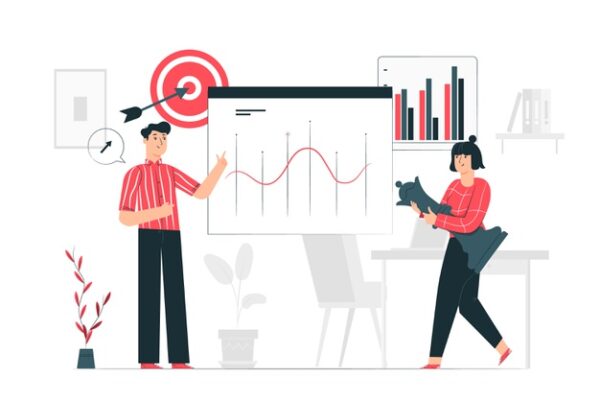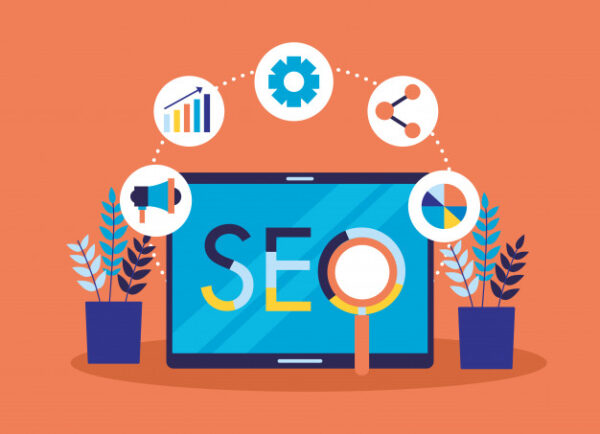Underestimating the SEO’s value can only work to the detriment of your business. Companies without good SEO strategies are likely to fail, so if you don’t have an SEO strategy, it is the right time to start planning out your SEO. Thankfully there are a lot of resources online to help you get started with SEO. Also, you can consult a Los Angeles SEO agency like this one here to help you with optimizing your SEO.
What is SEO?

SEO is a strategy that a business can employ to make itself visible to people using search engines to look for products and services. SEO aims at achieving two things;
- Increasing your business visibility, enabling it to be prominent in search engine results pages (SERPs).
- Increasing the ranking on the search engines enabling you to be placed on top in SERPs.
When most people want to buy a product, they will probably google it to get more info. Hubspot conducted a survey in which they found out that 77% percent of people research a brand before they engage with it. If your business/ brand cannot appear on customers’ search pages, then your business may not survive for long. SEO is a concept you need to grasp and implement in your business.
A digital marketing company like Radiant Elephant also offers professional SEO marketing services along with other effective digital marketing strategies. With a team of creative professionals, Radiant Elephant excels in delivering personalized service and innovative solutions, setting itself apart from larger, more impersonal agencies.
How do search engines rank pages?

To understand how SEO works, one needs to know how the search engines function. One vital point to remember is that the search engine’s objective is not to advertise your business, but instead, it seeks to give the searcher the most relevant answer to his/her question.
To give out the best answer, the search engine uses bots and algorithms. Let’s take Google as an example since it is the most popular search engine. Google finds the best answer for their users using three steps;
- Crawling – Using their google crawlers (bots), Google looks for publicly available pages. Once the crawlers find the webpages, they take the data to Google servers.
- Indexing – Once the webpages are in the Google servers, the bots analyze the content in those webpages and arrange them in a specific manner.
- Ranking – When a browser has a query, Google presents the best answers in order. The most relevant is at the top of the SERP, while the least relevant is at the bottom.
Algorithm Update
Algorithm updates are pivotal in SEO. Search engines like Google regularly tweak their algorithms to refine how webpages are ranked. These changes can disrupt rankings, making it crucial for marketers to adapt.
For example, Google’s core updates often prioritize factors like mobile-friendliness and page speed. High-quality, user-centric content also takes precedence. To maintain or improve rankings, SEO practitioners must stay updated and adjust strategies accordingly. Adapting to these updates ensures that websites continue to rank well and deliver valuable content to users.
Ensuring that crawlers can access your webpage

Google crawlers are pretty effective, but there are some webpages that they cannot access. If the crawlers cannot access your site, your content is not visible to browsers, and therefore even if you have the best answers for browsers, Google cannot index or rank your webpage.
Several reasons may prevent the bots from crawling your webpage, such as;
- Your content is hidden behind login forms (a crawler cannot log in).
- Text is hidden behind images, videos, or any other non-text media forms.
When you set up your website, ensure that keywords, links, and navigation are in text format only. Another point to note is that the crawlers navigate the site as a browser does; hence you should place a sequence of links leading the crawler from page to page. In this way, the crawler can crawl all your pages and index them.
How do you check whether your site has been crawled?
There are two ways that you can check whether your page has been crawled. One way is to search on Google by typing “site:yourdomain.com.” Once you do that, the number of indexed pages of your domain will appear on the SERP. For a more accurate result, you can utilize Google’s Search Console to determine whether google bots have crawled your site.
Keywords

Once you ensure that you are visible to Google, the next step is becoming visible to your target customers. The best way to ensure that content gets to your target customers is by the use of keywords. The generation of keywords is a vital part of ensuring your SEO strategy is successful. When looking for keywords, you should answer questions such as;
- What are my customers’ queries?
- How do my customers phrase their queries?
- Which words do my target customers use?
- Where are my customers located?
To answer the questions, you can conduct surveys or use keyword explorer tools. You may find many keywords, and in truth, some may lead you to attract the wrong people. To get the best keywords to start with, evaluate what your competitors are using to rank their content, and start using them. Also, tools such as Google Trends and Google Keyword planner can come in handy in helping you know the value of keywords.
Google Keyword Planner is a tool provided by Google Ads that helps advertisers and marketers research and analyze keywords for their search engine marketing (SEM) campaigns. It allows users to find relevant keywords and get insights into their search volume, competition, and cost-per-click (CPC) estimates.
Here’s how Google Keyword Planner Works
- Keyword research ─ Users can start by entering a specific keyword or key phrase related to their business, product, or service. The tool then generates a list of keyword ideas based on that input. Finding a trustworthy digital marketing agency is important because it can greatly impact the success of your online marketing efforts.
- Search volume data ─ For each keyword, Google Keyword Planner provides historical search volume data, which indicates how often people have searched for that particular keyword in Google’s search engine. This information helps users understand the popularity and potential reach of their chosen keywords.
- Competition analysis ─ The tool also provides insights into the level of competition for each keyword. It categorizes competition into low, medium, or high, based on the number of advertisers bidding on those keywords.
- Cost-per-click estimates ─ Google Keyword Planner offers estimated cost-per-click (CPC) data for keywords. This information helps advertisers understand the potential cost associated with running ads targeting those keywords.
- Keyword grouping and organization ─ Users can group and organize their chosen keywords into ad groups, which makes it easier to structure their advertising campaigns and create relevant ad copies.
- Keyword performance forecasting ─ Google Keyword Planner allows advertisers to get performance forecasts for their selected keywords, estimating the number of clicks, impressions, and conversions they may receive based on the provided budget and bid.
It’s important to note that Google Keyword Planner is primarily designed for users running Google Ads campaigns. To access the tool, users need a Google Ads account. However, basic keyword research can be performed without actively running ads.
Overall, Google Keyword Planner is a valuable resource for marketers and advertisers looking to identify relevant keywords, understand their potential reach and competition, and optimize their search engine marketing strategies.
On-page optimization

After comprehensive research on the best keywords to use, it is now time to use the research to optimize your webpage. An important thing to note is that old methods such as spamming content and keyword stuffing do not work anymore. The best way to rank on Google is by providing content that is ten times better than your competitor’s content.
Keyword optimization
Some on-page keyword optimization tactics to do include;
- Place the page’s primary keyword in the URL and the heading.
- Ensure that you have your keyword in the first few paragraphs as Google bots tend to value the words at the beginning of the page more.
- Ensure that your keywords are organically placed on the page, and you do not just stuff them.
- Use meta-title and meta description tags.
Internal links
As we mentioned above, crawlers can follow your links. Internal links are links that guide the crawlers or users to other pages on your website. Ensure you insert internal links to increase the website’s crawlability level and improve the users’ experience.
External links
External links position your webpage as authoritative and resourceful. Note that Google will consistently rank webpages according to how popular and authoritative they are because it considers authoritative content to have relevant answers. Try to link from your sources to identify yourself as an authority and rank high in your content. If you need help to do so, be sure to use a company like huskyhamster.com.
Key Takeaway

SEO is essential to any business, as many customers use search engines when looking for products and services. There are many factors to consider, and if you struggle coming up with a strategy, consider hiring an SEO agency to help you out, as it is worth it in the long-term.




